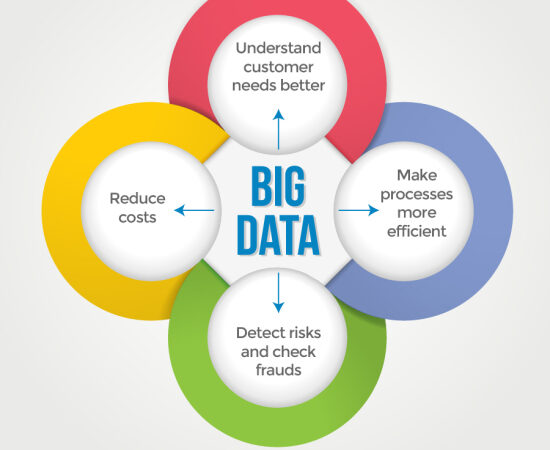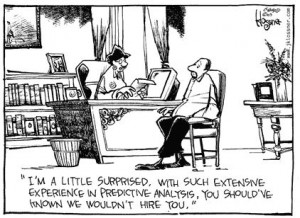
Business data has existed for a long time without being tapped. With innovative tools and falling costs, companies are unlocking even complex databases to identify useful patterns and make better business decisions. Big data analytics examines not only structured information like purchase histories, customer relationship management (CRM) data and intelligence from industry but unstructured data including social media feeds, blogs, tweets, videos, and other sources. This structured as well as unstructured data is the basis of competition to enhance productivity. Big Data for businesses is helping organizations in planning and taking right decisions based on information gathered from different sources. Large enterprises are using big data to establish their foothold in the market.
Earlier, Big Data for businesses excited only geeks, but now it’s a necessity for businesses to stay ahead in the competition. According to research from the McKinsey Global Institute (MGI) and McKinsey & Company’s Business Technology Office, the enormous amount of data generated, stored and extracted for insights has become economically pertinent to businesses, customers and others as well.
Data Analysis For Productivity
Data Analysis for Productivity has become crucial for companies to innovate, compete and generate economic value. Data Scientists leverage data to understand production volume patterns, correlation with demands, and analyze significant patterns from unstructured data. Big Data Analytics for increasing productivity is becoming one of the most significant ways to boost productivity. Established competitors as well as start-ups are leveraging data-driven strategies for innovation. Big data analytics is helping in improving production quality by analyzing unstructured data in the form of social media feeds, blogs, videos and other sources. Data along with advanced analytics enable businesses to develop models for predictive analysis. Amalgamation of Big Data with predictive analytics can pose a challenge to some industries. Implementing high-performance analytics which speeds up varied processes help businesses enhance productivity and ensure customer satisfaction.
Using Data Analysis for Productivity, a business can get benefitted with its database marketing. Data Analysis opens new avenues for scheduling a successful marketing campaign. The outcome will have a more productive team enhancing ROI across the entire organization. Productivity will increase giving significant positive outcomes and enhancing the cash flow for the organization. Big data along with high-performance analytics will provide actionable insights for improving productivity.
Business Intelligence
Business Intelligence will further help in making decisions and developing techniques that will transform the future of business. Big Data for business Intelligence helps businesses to make intelligent predictions on the market demand using predictive analytics platforms. Analysts are applying special algorithms to the company’s data to make real-time predictions.
HR Analytics
Different industry verticals are using HR analytics to enhance productivity. However, mining voluminous amount of data for improving performance is a big challenge for HR managers. High Performing organizations are leveraging data for strategic and long-term planning. Sahil Dhawan, Director, SAP – KPIT Cummins said in an interview, “HR and performance management are the first steps towards Business Intelligence (BI). Companies will be using analytics to understand their supply chain better and keep a track manufacturing trends.”
Big Data for Office Productivity helps in analyzing employees’ behavior. As a result, it helps in improving their performance and office productivity. More and more companies are turning to big data to improve office productivity. Companies are placing a variety of sensors across the office to track employee movements like motion sensors, sensors on employee badges and others to keep a record of employee activity. Employers are combining this data with employee satisfaction surveys to enhance productivity and employee satisfaction. They are gathering data on how employee interactions are affecting office productivity. For instance, Bank of America made its employees wear badges with sensors in them to track their movements along with the tone of their conversation to gather information regarding the importance of social welfare for its call center employees. Results indicated that employees working in close-knit teams and having frequent interactions were the most productive ones.
Big Data In Real-Time
Big Data in real-time and high-frequency nature of the data helps in estimating metrics such as consumer confidence, consumer choice and others. This is adding more power to predictive analytics. Moreover, high frequency of data enables users to perform test on theories in real-time.
Next Big Boost in Big Data
Next big boost in Big Data is quite evident with a promising brand understanding customers’ requirements, having meaningful interaction with them and converting them into leads. These leads can be in the form of a purchase, good review, a recommendation or a customer that comes back. With extraction of information from GPS, social sharing and others, brands are exactly aware of who is going to buy their products. Businesses are using this information to reach prospective customers and cater current customers’ in a better manner. The focus has shifted in favor of customers telling companies their specific needs.
Equipped with powerful business insights, companies concentrate their time and energy on their current and prospective clients. This results in more productivity and more satisfied customers. It helps companies to better manage their customers ensuring smooth flow of operations. In the near future, Big Data will become the basis of competition. It will enhance productivity and economy by reducing waste, thereby enhancing the quality of products and services.




















